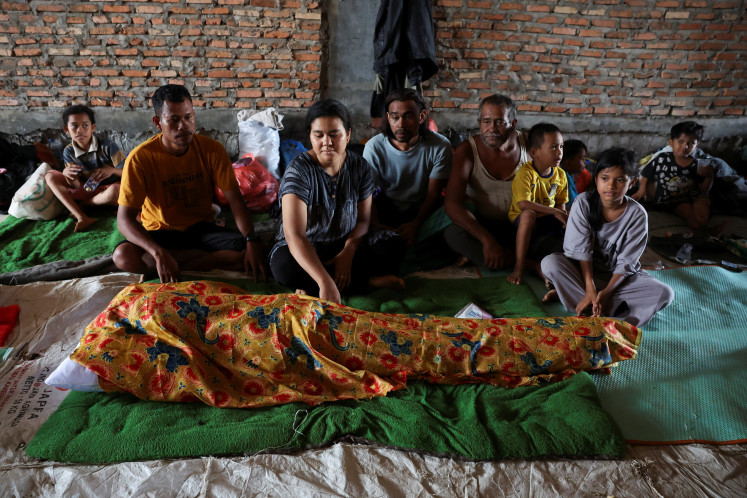Popular Reads
Top Results
Can't find what you're looking for?
View all search resultsPopular Reads
Top Results
Can't find what you're looking for?
View all search results‘Satria’ to connect hospitals, schools
The country’s multifunctional satellite that will provide high-capacity internet to government organizations, military facilities, schools and hospitals in remote areas will enter production later this year
Change text size
Gift Premium Articles
to Anyone
T
he country’s multifunctional satellite that will provide high-capacity internet to government organizations, military facilities, schools and hospitals in remote areas will enter production later this year.
The satellite, called the Republic of Indonesia Satellite and nicknamed Satria (knight), will have a capacity of 150 gigabits per second, the largest in Asia in its class.
Communications and Information Minister Rudiantara signed on Friday an agreement on the production and operation of the satellite between the ministry, state infrastructure guarantee fund PT Penjaminan Infrastruktur Indonesia (PII) and private satellite operator Pasifik Nusantara Satellite (PSN). The ministry acts as the project’s financier, PII as guarantor and PSN as lead contractor and operator.
Speaking at the signing ceremony at the National Museum in Jakarta, Rudiantara said the satellite would be the biggest of its kind in Asia and the highest-capacity satellite in its class. The satellite, which would likely be built by French aerospace manufacturer Thales Alenia Space, is slated for launch by 2022 and operation by 2023. It is expected to serve for 15 years before being retired.
In funding the satellite, the ministry will disburse Rp 21.4 trillion (US$1.5 billion) in regular installments over a 15-year period to a PSN-led consortium of four companies to build, launch, operate and maintain the satellite on behalf of the government.
Aside from PSN, the consortium consists of PT Pintar Nusantara Sejahtera, the majority shareholder of PSN; PT Dian Semesta Sentosa, a subsidiary of Sinarmas conglomerate; as well as PT Nusantara Satelit Sejahtera.
“PSN as the satellite operator provides the technical expertise while the others are strategic and financial investors. But of course, PSN also helps seek funding,” said the operator’s director of strategy and cooperation Anggarini Surjaatmadja.
Financial muscle was necessary, she continued, because the ministry’s funding would only be disbursed once the satellite becomes operational and thus the consortium needed to seek separate equity funds and loans to construct and launch the satellite.
While the consortium itself would provide the equity funds, it needed banks and credit export agencies to provide the loans.
Anggarini added that even though the consortium was finalizing how much money it needed, it was already trying to convince the French Public Investment Bank to guarantee French banks willing to finance the project, seeing as a French company was the satellite’s potential manufacturer.
PSN itself will be guaranteed by PII, a guarantee fund backed by the Finance Ministry that could pay for the satellite should the Communications and Information Ministry fail to pay its installments. In exchange, PII receives full access to the project in ascertaining that it is executed according to government specifications.
“We will pay for missed installments. It ensures the consortium gets its payments on time. We also guarantee payment in case the government terminates the contract midway,” said PII president director Armand Hermawan.
Rudiantara also used Friday’s ceremony to emphasize that the satellite’s purpose was to empower remote villages, especially those outside Java, where it was not cost-effective to install internet cables and towers.
Satria is designed to reach 149,000 locations, [87 percent] of which are outside of Java. The locations include 93,400 schools, 47,900 local administrative offices and 3,700 clinics.
The government expects internet connectivity to bring efficiency and transparency to such public services and thus stimulate economic growth, particularly for micro, small and medium enterprises.
“I don’t want all the locations in Java,” said Rudiantara. “We have to target the 149,000 locations as remote regions outside of Java. Given enough scale, this arrangement could boost economic development in those regions.”










